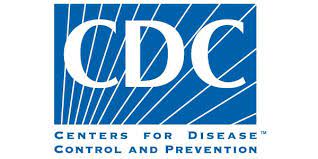Fungal Infections
Understanding Fungal Infections
Unveiling The Invisible Invaders
In the vast world of microbiomes that inhabit our bodies, fungi stand as both friends and foes. Although they’re essential for our ecosystem, an overgrowth or invasion by more virulent species can lead to a range of skin issues, commonly referred to as fungal infections. Understanding these often-ignored or misunderstood conditions can promote better skin health and general well-being.
Fungal infections primarily develop when an invading fungus takes over an area of the body and is too much for the immune system to handle. Fungi can live in the air, soil, water, and plants. There are also some fungi that live naturally in the human body. Like many microbes, there are helpful fungi and harmful fungi. When harmful fungi invade the body, they can be difficult to kill, as they can survive in the environment and re-infect the person trying to get better.
Fungal infections are categorized by the area of the body they affect – Tinea pedis affects the feet (athlete’s foot), Tinea corporis the body, Tinea capitis the scalp, and Tinea cruris the groin (jock itch). Another common fungal infection is candidiasis, caused by Candida species, affecting areas like the mouth, throat, gut and vagina. Onychomycosis affects the nails. Many of these infections cause rashes, itching, redness and scaling, and can be mistaken for other skin conditions such as eczema or psoriasis. Fungal infections of the scalp may lead to hair loss. Nail infections typically lead to thick, discolored nails.Fungal infections are typically treated with antifungal medications, available in various forms like creams, ointments, tablets, and injections depending on the type and severity of the infection. In many cases, maintaining personal hygiene and keeping the skin dry can prevent fungal infections.
Despite their common occurrence, fungal infections often don’t get the attention they deserve. By acknowledging their existence and impact, we can take more proactive measures in managing our skin health.
The journey to a more confident you starts with one decision. That is the decision to get treated, why wait Book Online today? If you’re on the fence or have questions brewing, remember: We at SullivanDermatology are always here to help.Videos
Fungal Infections
Fungal infections of the skin are common and can affect various areas of the body. While typically non-threatening, these infections can cause discomfort and be challenging to eliminate. Understanding the differences between a bacterial vs fungal skin infection can be crucial in determining the most effective treatment method.
Fungi thrive in warm, moist environments, making certain areas of the body, like the feet, groin, and underarms, particularly susceptible to fungal infections. Factors such as poor hygiene, a compromised immune system, and prolonged moisture on the skin can increase the likelihood of developing a fungal skin infection. Sometimes, distinguishing the cause of the infection can be tricky, necessitating the differentiation between a bacterial vs fungal skin infection.
Fungi thrive in warm, moist environments, making certain areas of the body, like the feet, groin, and underarms, particularly susceptible to fungal infections. Factors such as poor hygiene, a compromised immune system, and prolonged moisture on the skin can increase the likelihood of developing a fungal skin infection. Sometimes, distinguishing the cause of the infection can be tricky, necessitating the differentiation between a bacterial vs fungal skin infection.
Misinformation about fungal skin infections can lead to unnecessary worry and ineffective treatment. One common myth is that fungal infections only occur in unhygienic conditions. While good hygiene can help prevent infections, anyone can get a fungal infection, regardless of cleanliness. Another myth is that fungal infections are highly contagious. While some fungi can spread from person to person, not all fungal skin infections are easily transmitted. Lastly, people often misidentify bacterial vs fungal skin infections, assuming that any skin infection is bacterial. However, the treatment for these two types of infections is different, making proper identification crucial.
Treatment for fungal skin infections typically involves antifungal medications, which can be topical (applied to the skin) or systemic (taken by mouth). The type and duration of treatment may vary depending on the nature and severity of the infection. It’s essential to complete the entire course of treatment, even if symptoms improve, to ensure the infection is entirely cleared.
For mild to moderate infections, over-the-counter topical antifungal creams or sprays may be effective. More severe or persistent infections may require prescription-strength topical medications or oral antifungal drugs.
In some cases, it can be challenging to distinguish between a bacterial vs fungal skin infection, leading to misdiagnosis and inappropriate treatment. If you have a skin infection that is not improving with over-the-counter treatments, you should Consult with a Board Certified Dermatologist, like Dr. Sullivan to ensure you’re treating the correct type of infection.
In conclusion, while fungal skin infections can be uncomfortable and stubborn, they are generally treatable with appropriate antifungal therapy. Understanding the distinction between bacterial vs fungal skin infections can aid in proper diagnosis and treatment. If you suspect you have a skin infection that isn’t improving with typical measures, seek medical attention to get an accurate diagnosis and treatment plan.
For More Information:
Fungal Infections (WebMD) or Fungal Infections (Healthline).FAQs About Fungal Infections
Fungal infections occur when an invading fungus takes over an area of the body and is too much for the immune system to handle. They can affect various parts of the body.
Fungal infections are caused by harmful fungi that may live in the environment (air, soil, water, plants) or are already living naturally in the human body.
Fungal infections are typically treated with antifungal medications, which can be creams, ointments, tablets, or injections, depending on the infection's type and severity.
Yes, maintaining personal hygiene, keeping skin clean and dry, and avoiding sharing personal items can help prevent fungal infections.
Yes, many fungal infections can spread from person to person through direct skin contact or contact with personal items.
Symptoms vary depending on the type of infection but often include rashes, itching, redness, and scaling. Some fungal infections may cause hair loss or lead to thick, discolored nails.
Most skin-based fungal infections are not life-threatening but can cause discomfort. However, if a fungal infection enters the bloodstream, it can be serious and require immediate medical attention.
With treatment, most skin and nail fungal infections can improve within a few weeks. However, some infections may take longer to resolve.
Yes, fungal infections can reoccur, especially if the underlying cause, such as a compromised immune system or chronic health condition, is not addressed.
Fungal infections are diagnosed based on their appearance and location. Your healthcare provider may take a skin scraping or nail clipping to confirm the diagnosis under a microscope or with a fungal culture.





